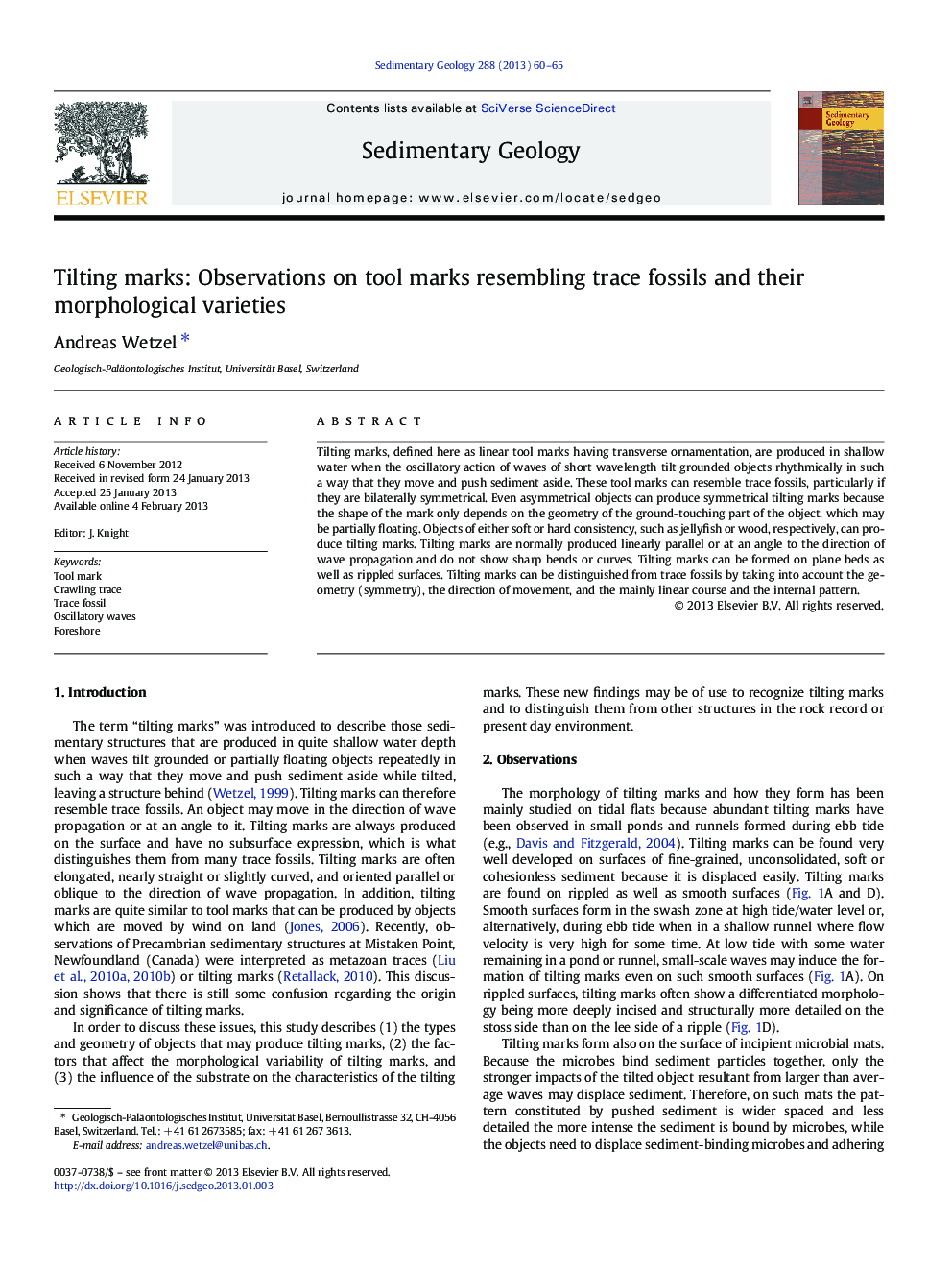| کد مقاله | کد نشریه | سال انتشار | مقاله انگلیسی | نسخه تمام متن |
|---|---|---|---|---|
| 4689648 | 1636075 | 2013 | 6 صفحه PDF | دانلود رایگان |
Tilting marks, defined here as linear tool marks having transverse ornamentation, are produced in shallow water when the oscillatory action of waves of short wavelength tilt grounded objects rhythmically in such a way that they move and push sediment aside. These tool marks can resemble trace fossils, particularly if they are bilaterally symmetrical. Even asymmetrical objects can produce symmetrical tilting marks because the shape of the mark only depends on the geometry of the ground-touching part of the object, which may be partially floating. Objects of either soft or hard consistency, such as jellyfish or wood, respectively, can produce tilting marks. Tilting marks are normally produced linearly parallel or at an angle to the direction of wave propagation and do not show sharp bends or curves. Tilting marks can be formed on plane beds as well as rippled surfaces. Tilting marks can be distinguished from trace fossils by taking into account the geometry (symmetry), the direction of movement, and the mainly linear course and the internal pattern.
► In shallow water, objects tilted by waves may produce trace-fossil like structures.
► Objects of varying consistency, from soft to hard, can produce tilting marks.
► Geometry and size of tilting marks depend on the ground-touching part of an object.
► Asymmetrical objects can produce symmetrical tilting marks.
Journal: Sedimentary Geology - Volume 288, 15 April 2013, Pages 60–65
